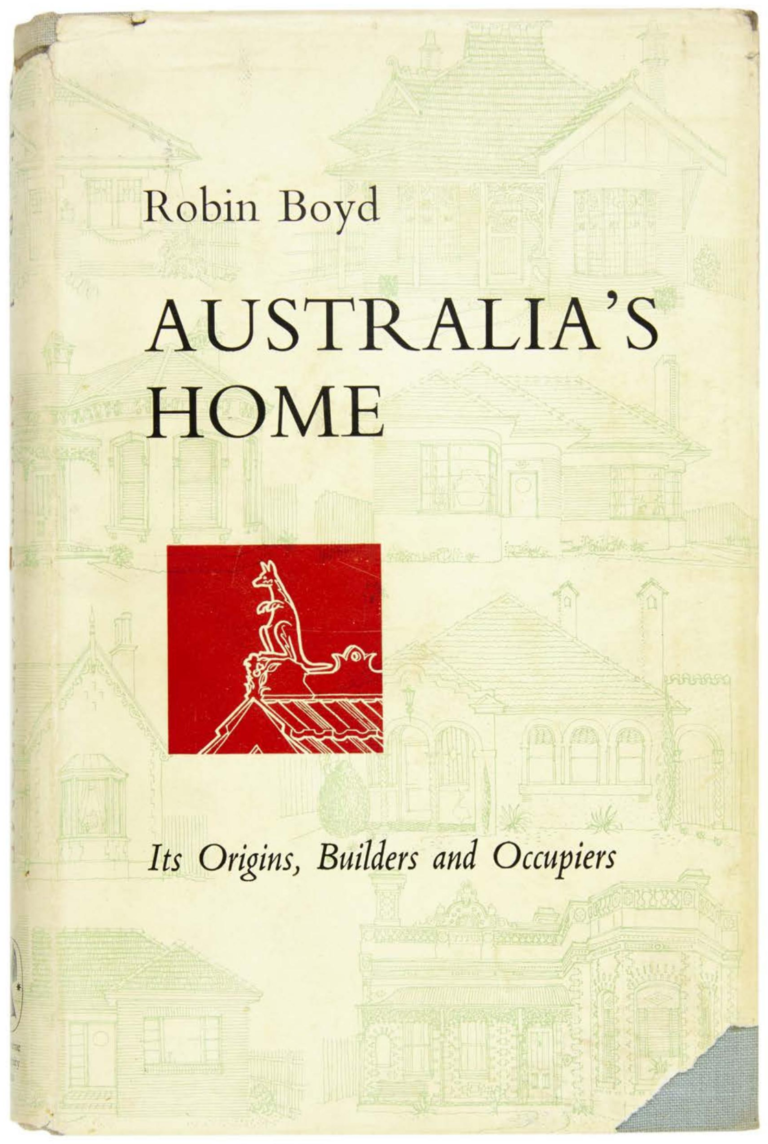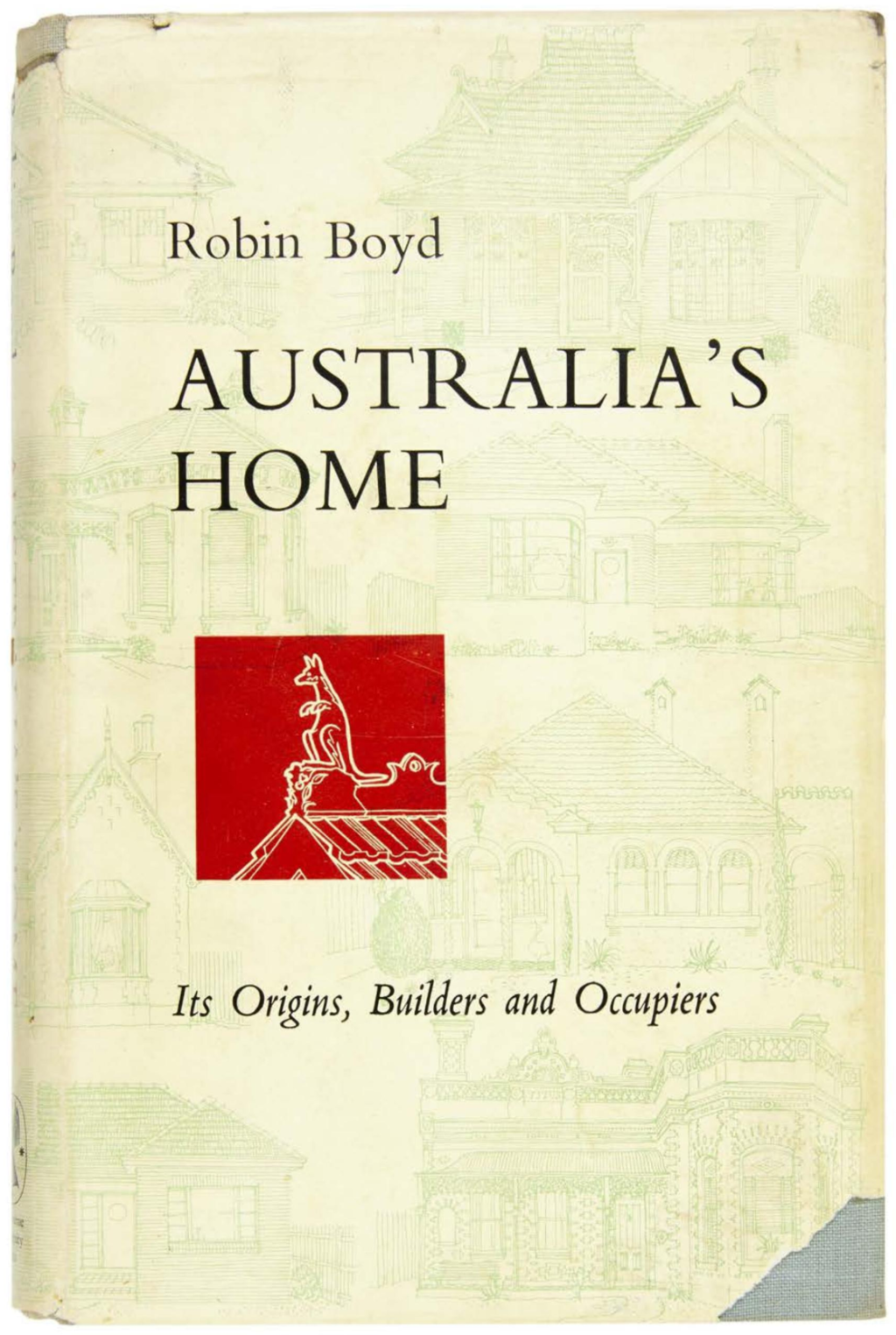Robin Boyd, Australia’s Home: Its Origins, Builders, and Occupiers (1952)
The Menzies era was characterised by a massive growth in rates of homeownership and the vast expansion of Australian suburbia. It was appropriate therefore, that early in the period there was published the first book celebrating the architecture of the humble Australian home.
Author and architect Robin Boyd, who was also something of a social critic, described it as ‘the story a material triumph and an aesthetic calamity’. In introducing his book Australia’s Home, Boyd explained that:
‘Despite the unco-ordinated wealth and time expended on it, the small house has been considered by authority as one of the lowest forms of building creation in Australia. Successful architects and builders seldom deign to touch it. Big business has all but spurned it. Politicians consider it only in times of acute shortage. Yet the small house, probably more than anything else that man has done, has made the fact of Australia and to an extent the faces of Australians.
Australia is the small house. Ownership of one in a fenced allotment is as inevitable and unquestionable a goal of the average Australian as marriage. Australia has more per head of population than other nations and has maintained a higher standard of living in a greater number of them. Collectively, they are an achievement. Individually they are prey to thoughtless habits, snobberies and fickle sentiment.’
Despite receiving a mixed reception from critics, the book became highly popular and has received many reprints over the years. As renowned historian Geoffrey Blainey explained foreword to the 1977 edition, it tapped into something akin to the ‘Forgotten People’ culture to which Menzies had always appealed:
‘He can’t be that serious, thought many cultural critics and historians. In their eyes, Australia in 1952 was not the small house where the average family spent much of its life and expressed its taste, sentiment and ideologies: Australia instead was really the big house of the parliaments and governors where politicians struggled for power. For his part Robin Boyd assumed that what the people did was more important than what was done in the name of the people.’
Boyd would go on to become one of Australia’s most celebrated architectural writers, continuing to muse about Australian homes, albeit in increasingly acerbic terms. His follow up, The Australian Ugliness (1960), was attacked as being entirely unpatriotic, but it may be that what Boyd hated most was the natural outcome of Menzian prosperity. In Australia’s Home he already said that the ordinary person was prone to make questionable architectural choices. But by 1960 they increasingly had the money to make such choices, leading to an outburst of what Boyd denounced as ‘featurism’ – unnecessary additions of which the owner was invariably proud, but which did not fit with the overall beauty of the house, let alone the aesthetic cohesion of the suburb itself.
Sign up to our newsletter
Sign up for our monthly newsletter to hear the latest news and receive information about upcoming events.



